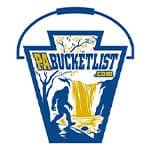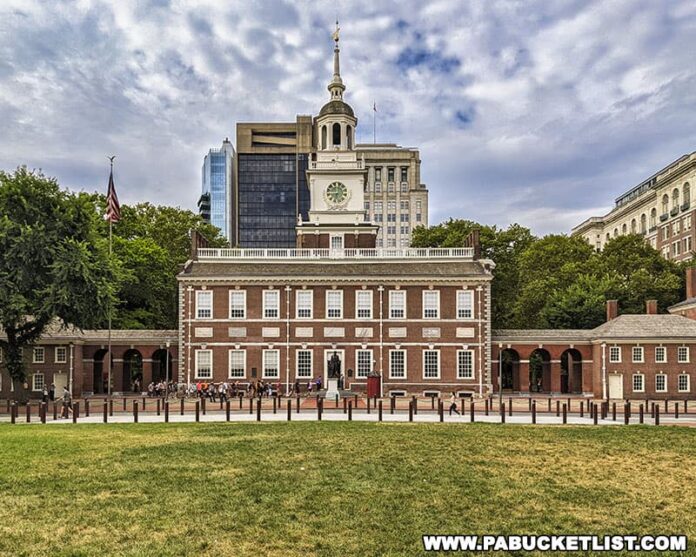
Independence Hall in Philadelphia is the birthplace of the United States!
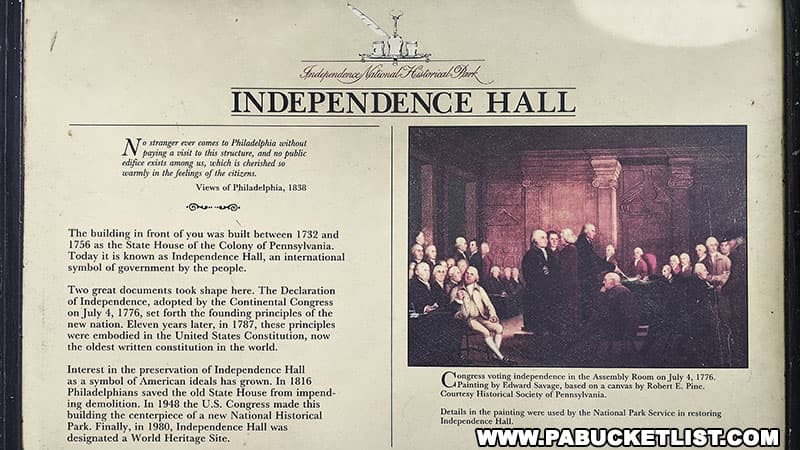
In 1776, the Second Continental Congress signed the Declaration of Independence here.
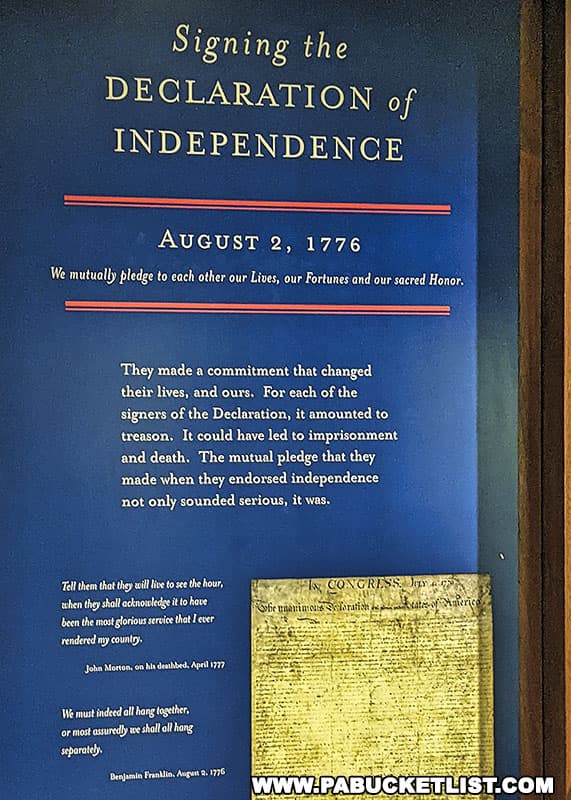
Eleven years later, in the same room, delegates to the Constitutional Convention created and signed the United States Constitution.
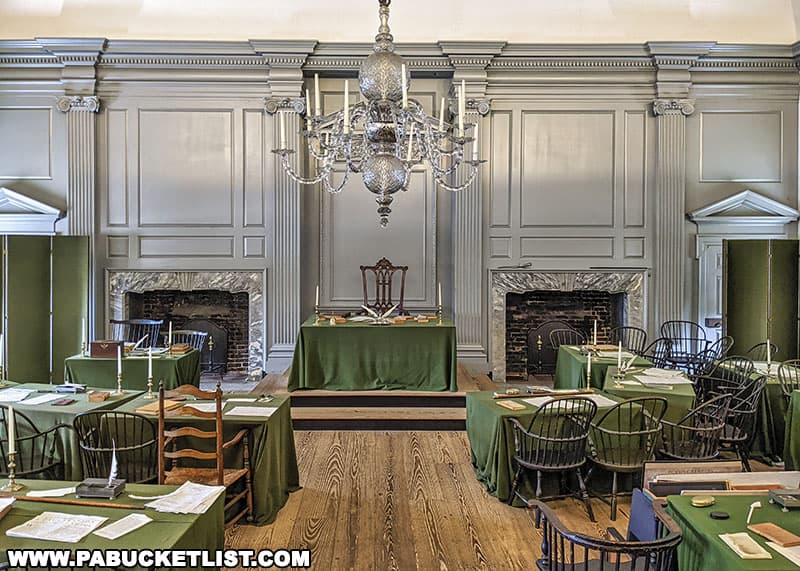
Although known today as Independence Hall, the building was constructed to be the Pennsylvania State House.
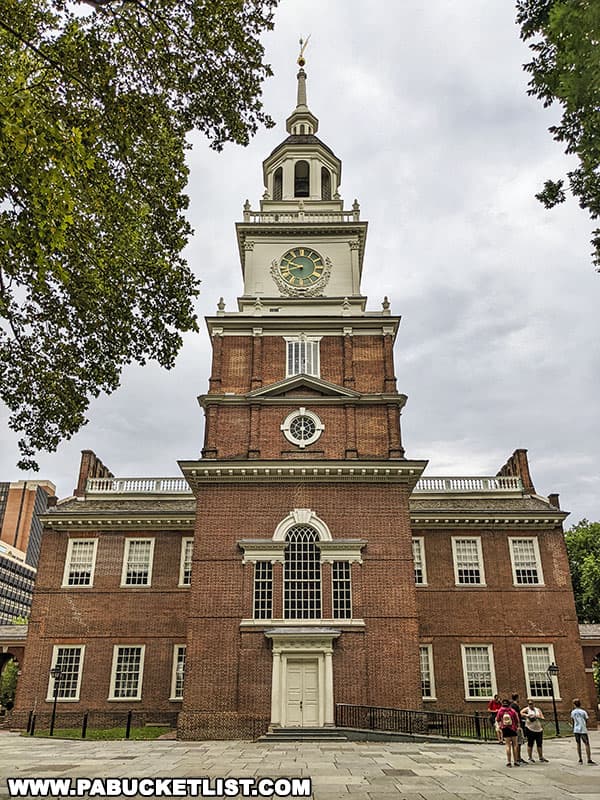
It once housed all three branches of Pennsylvania’s colonial government.
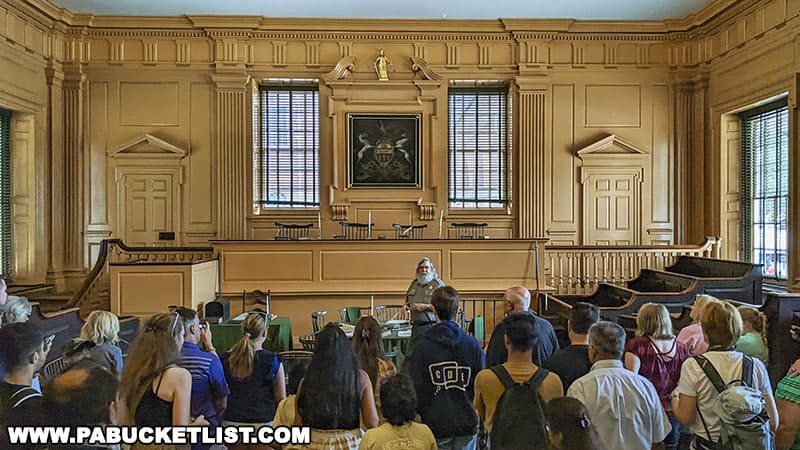
Today Independence Hall is the centerpiece of the Independence National Historical Park, and has been designated a UNESCO World Heritage Site.
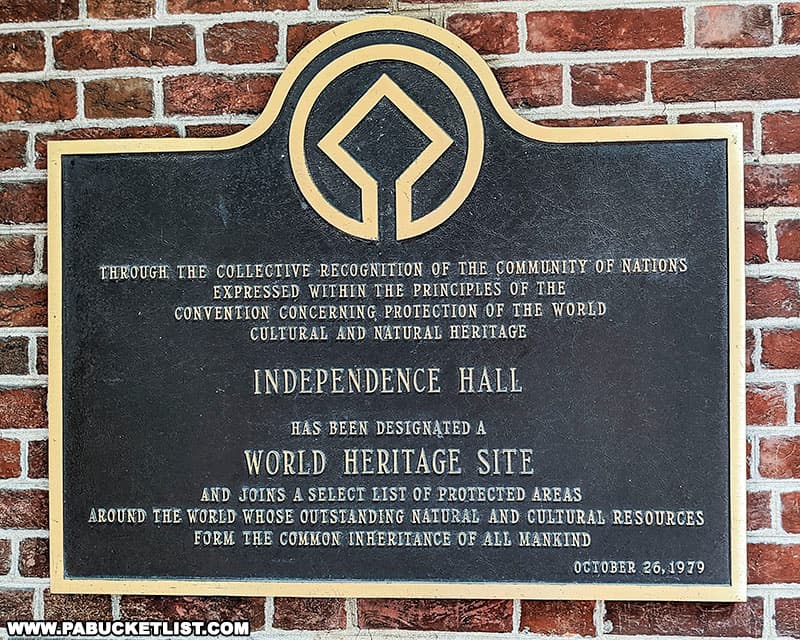
Touring Independence Hall
Independence Hall is open for tours daily from 9 am to 5 pm.
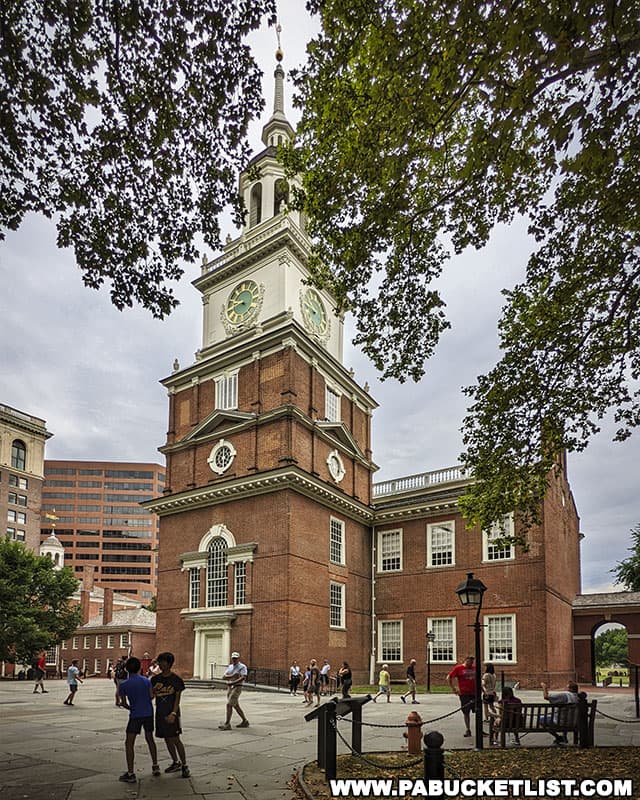
In January and February, entrance to Independence Hall is first-come, first-served, by guided tour only (except holiday weekends).
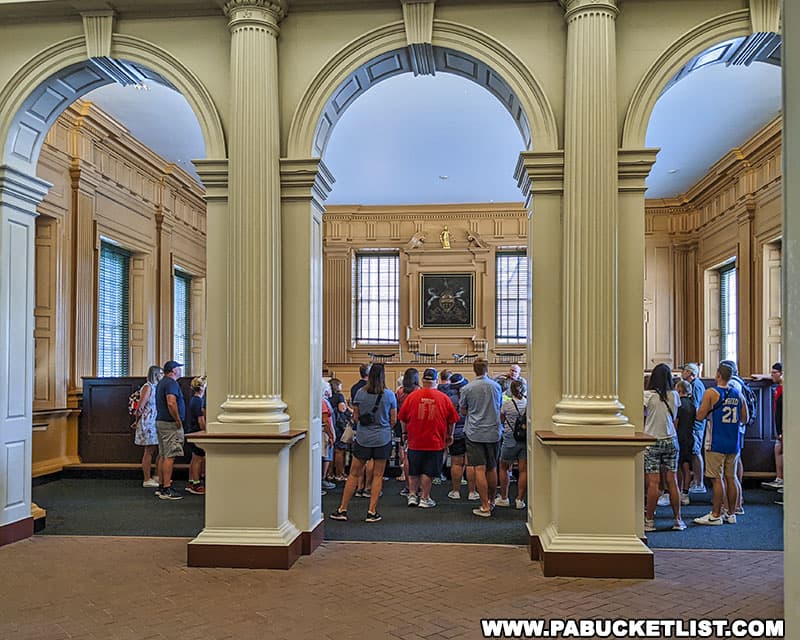
From March through December (and on holiday weekends in Jan-Feb), timed entry tickets are required, available at either the website or phone number listed in the image below.
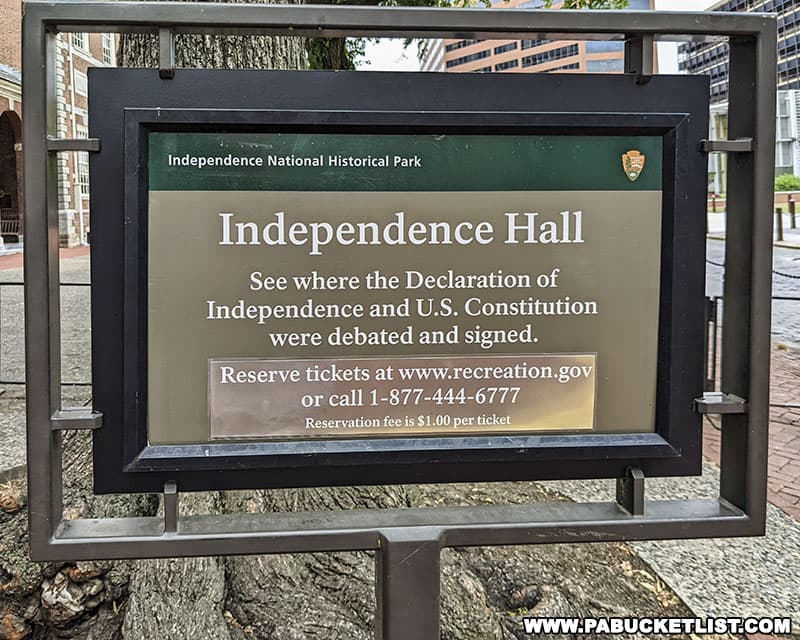
What You’ll See on the Tour
Tours are led by a National Park Service Ranger, and begin by entering through the front door of Independence Hall, near a statue of George Washington.
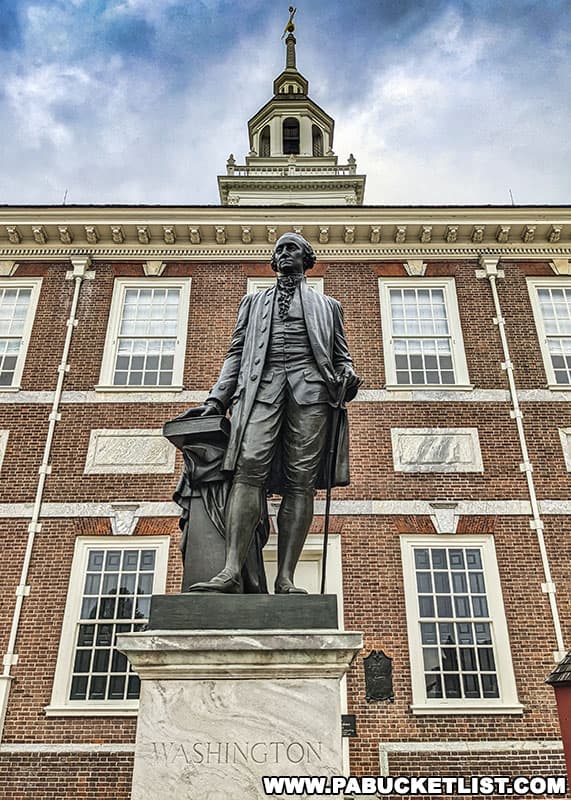
The first stop on the tour is the Supreme Court Room, which once housed the Pennsylvania Supreme Court.
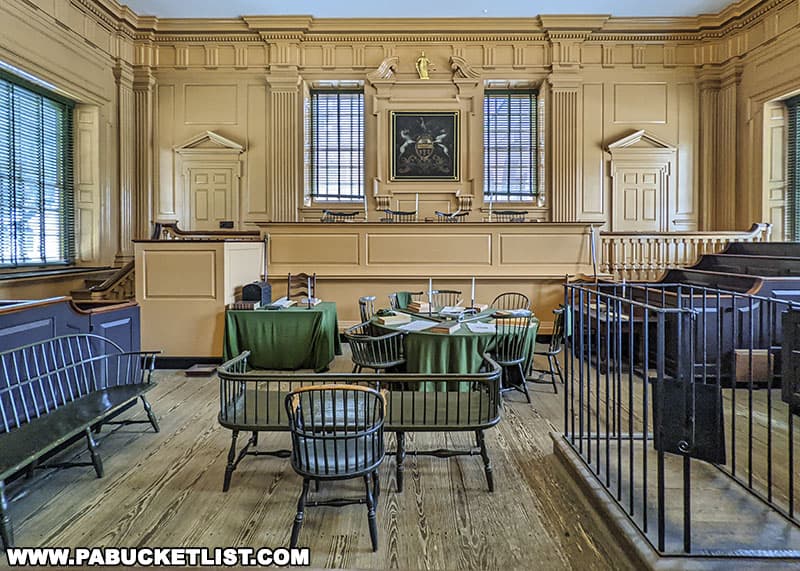
Above the bench where the four judges sat hangs a beautiful painting of the Pennsylvania State Seal.
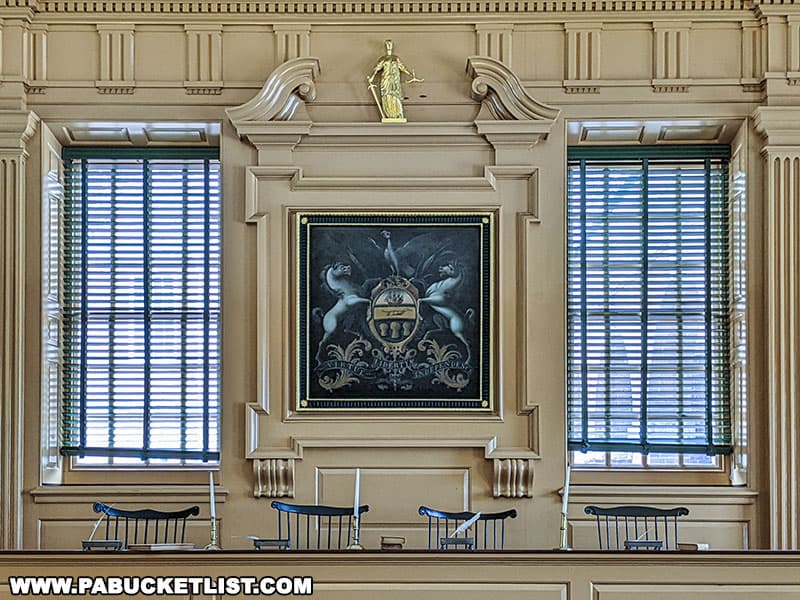
The second stop on the tour is the Assembly Room.
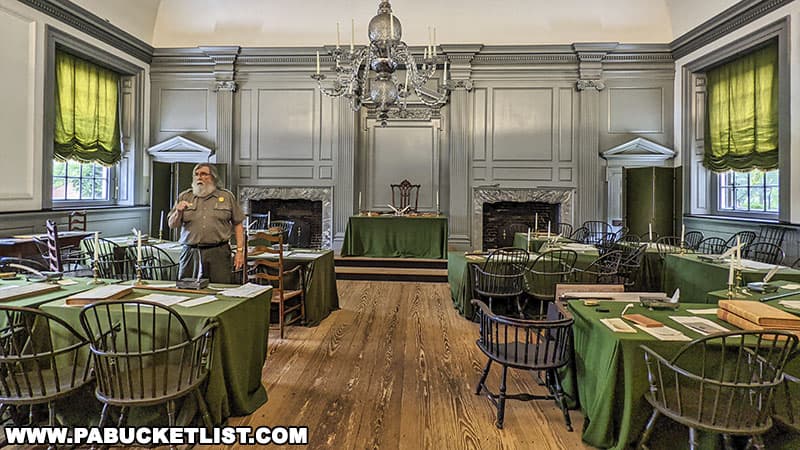
The Declaration of Independence and U.S. Constitution were both signed in this room.

In the 1850s, the Assembly Room became a shrine to the founding of the nation, proudly displaying the Liberty Bell and original paintings of the Founding Fathers.
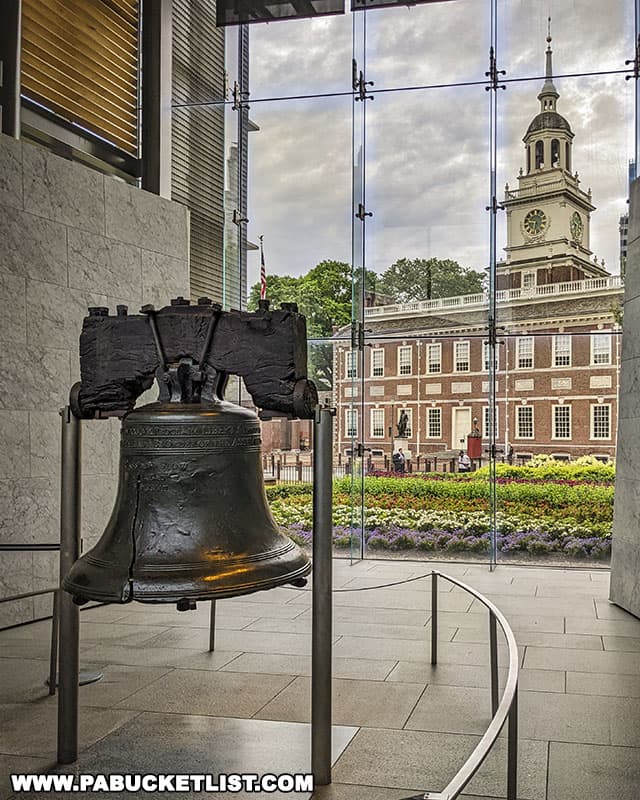
President-elect Abraham Lincoln visited this shrine-like room in 1861, as he journeyed to Washington D.C. for his inauguration.
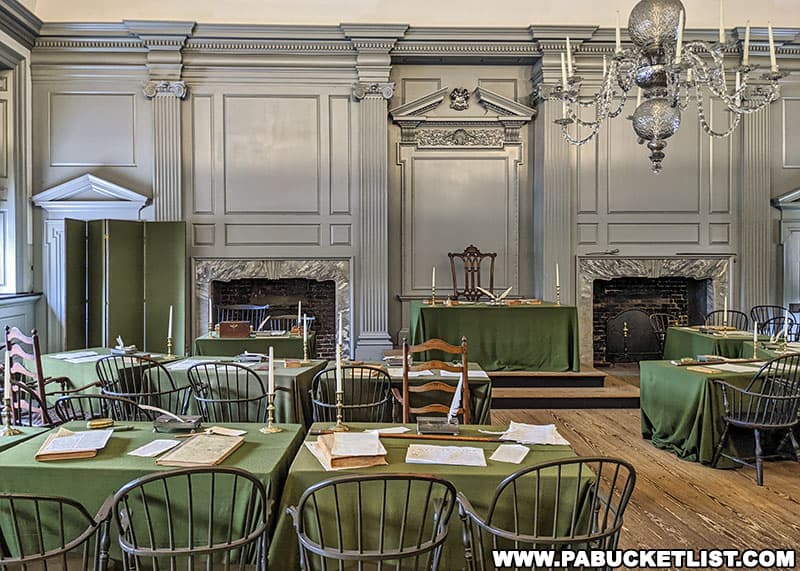
After his assassination in 1865, President Lincoln’s body returned to the Assembly Room to lie in state for two days, where more than 85,000 mourners passed by the casket.
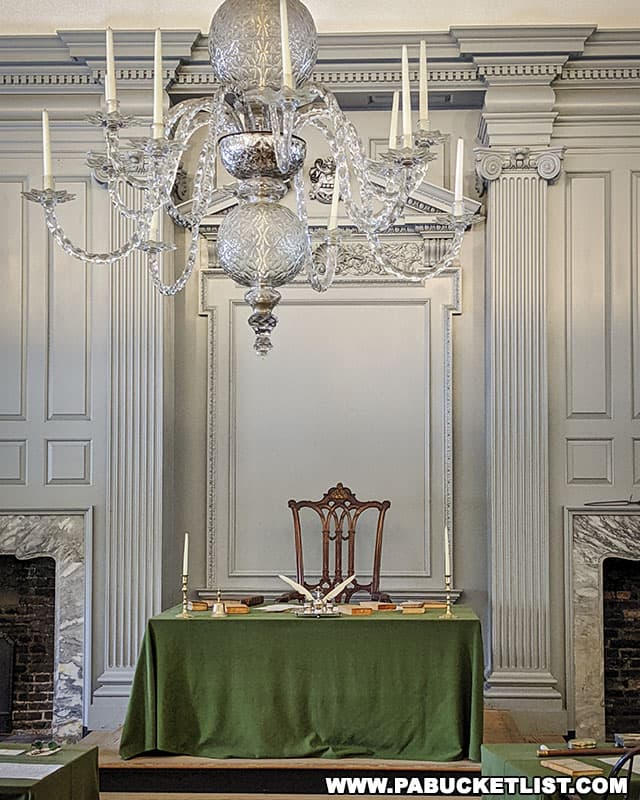
While you cannot get close to the actual “Rising Sun Chair” where George Washington sat while presiding over the Constitutional Convention in 1787, you can sit in an exact replica of it at the nearby Independence Visitor Center.
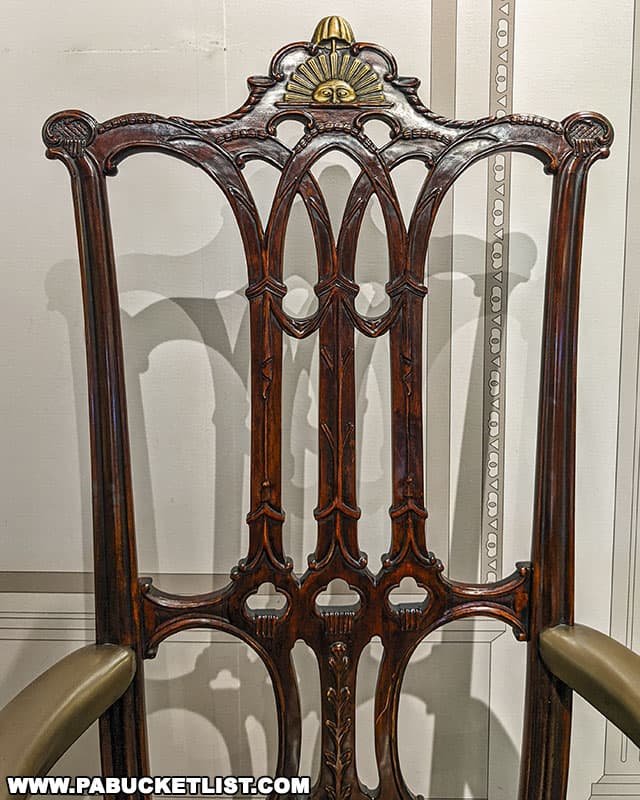
The tour moves back out into the hallway between the two chambers, where you’ll see a grand staircase leading to a second floor.
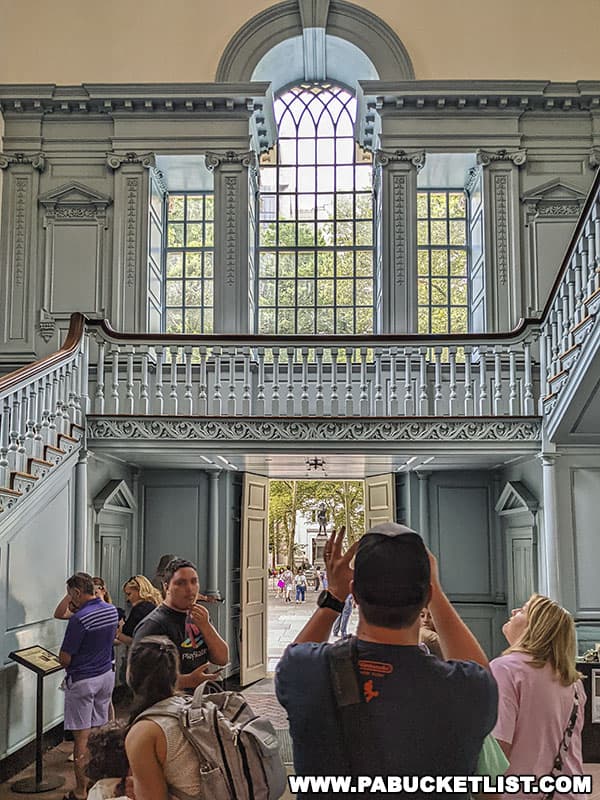
While the second floor is not part of the tour (at least not as of July 2022), it once housed the Governor’s office, and was used in the time the British occupied Philadelphia during the Revolutionary War as a prison hospital for American POWs.
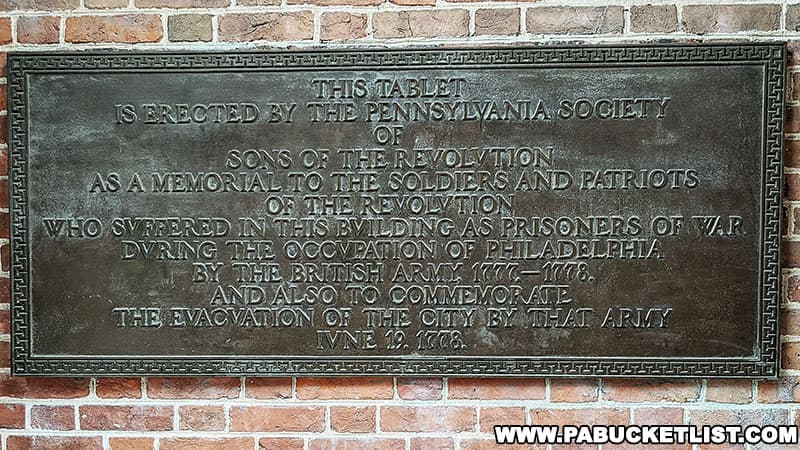
You’ll also notice many ornate wood carvings in this hallway between the two lower chambers of the building.
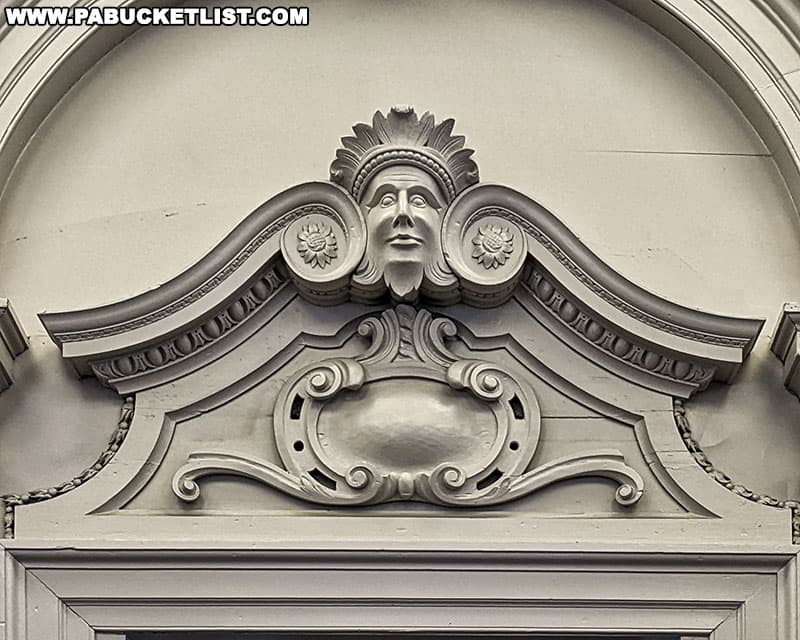
The tour then exits the rear of Independence Hall onto Independence Square.
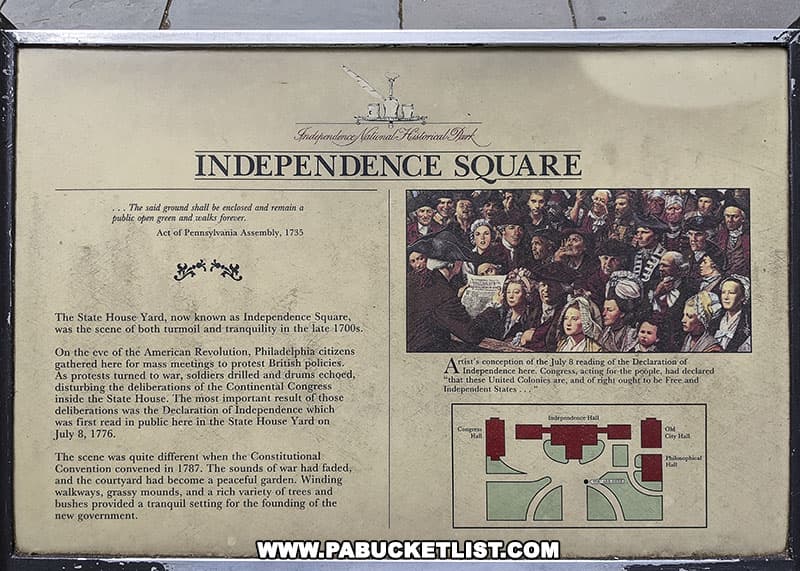
From here you can take a self-guided tour (no ticket required) of the West Wing of Independence Hall, which houses an exhibit called the Great Essentials.
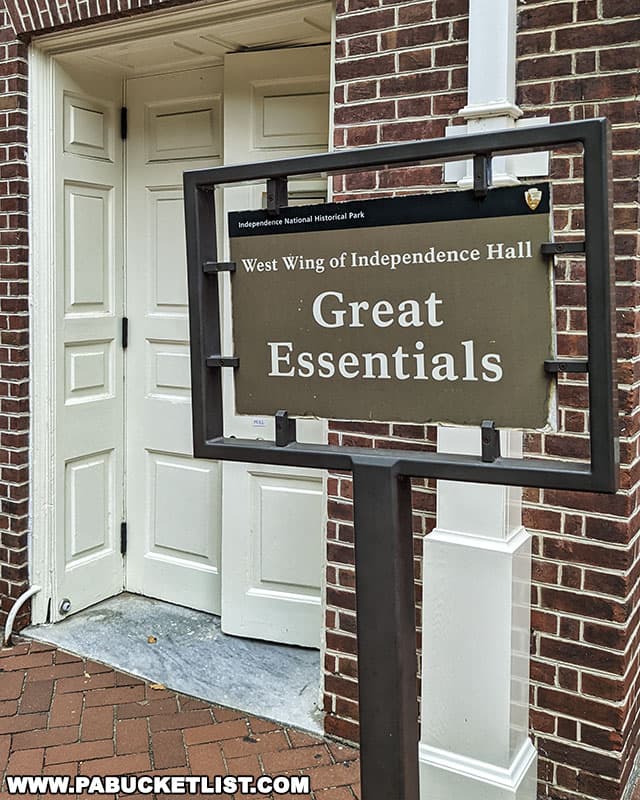
In this smaller chamber you’ll find original copies of the Declaration of Independence and the United States Constitution, as well as the inkwell used to sign both documents.
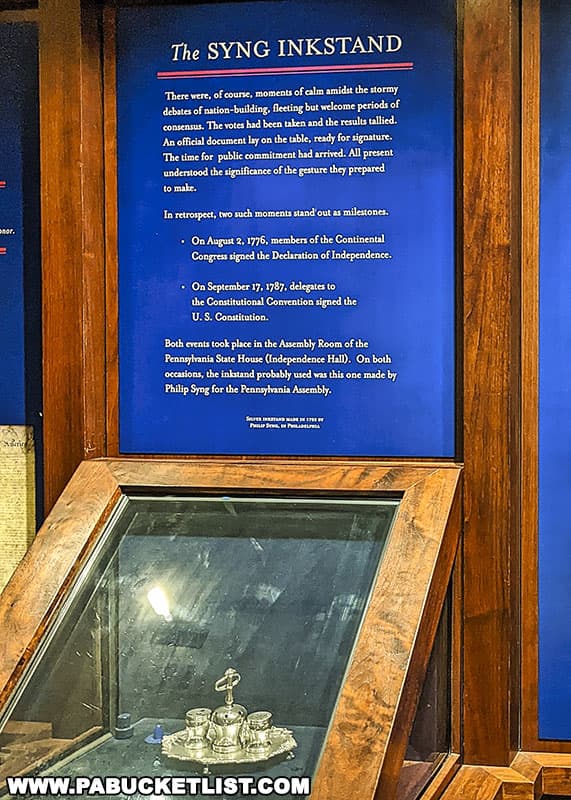
Final Thoughts
There is no more important or historic site in the United States that Independence Hall in Philadelphia.
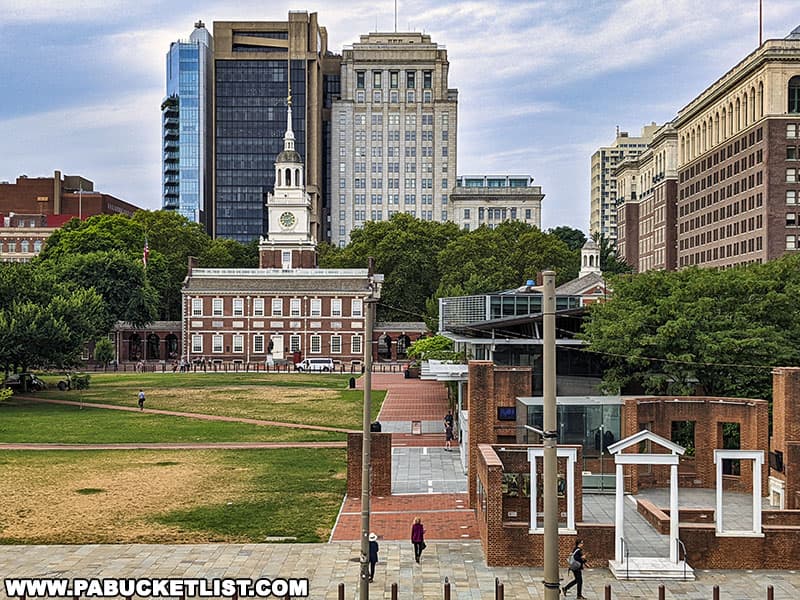
The debates, decisions, and documents associated with this building literally gave birth to the Nation, and have shaped every American’s lives to this very day.
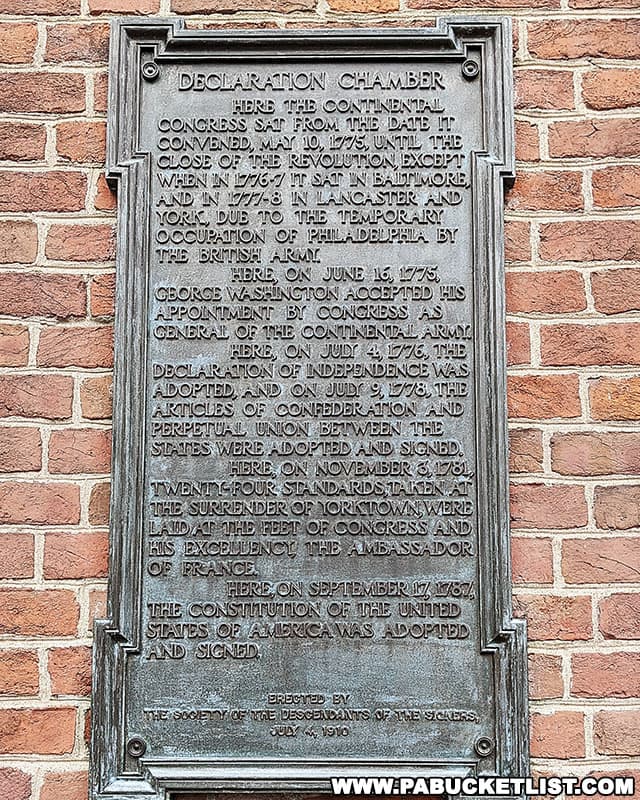
Visiting the exact spot where the United States got its start is a pilgrimage that, in my humble opinion, every American should make at least once in their lives.
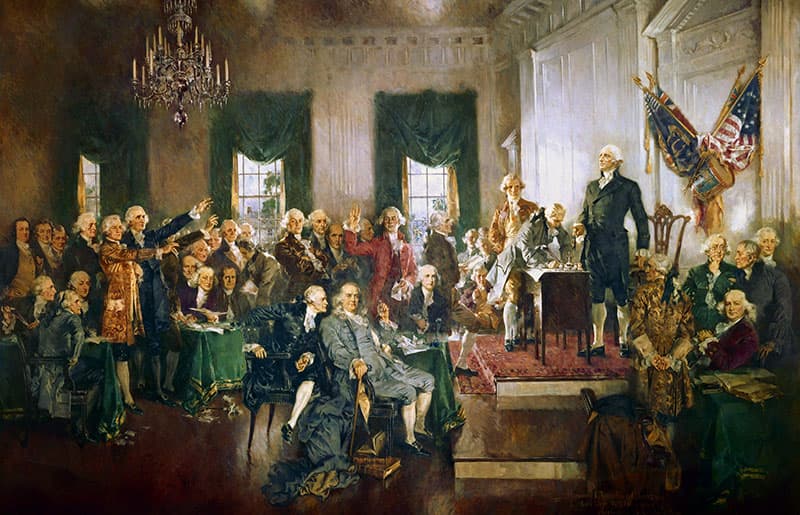
Related Articles
The Pine Creek Declaration of Independence, as it has come to be known, was signed on July 4, 1776 beneath an elm tree on the west bank of present-day Pine Creek in Clinton County.
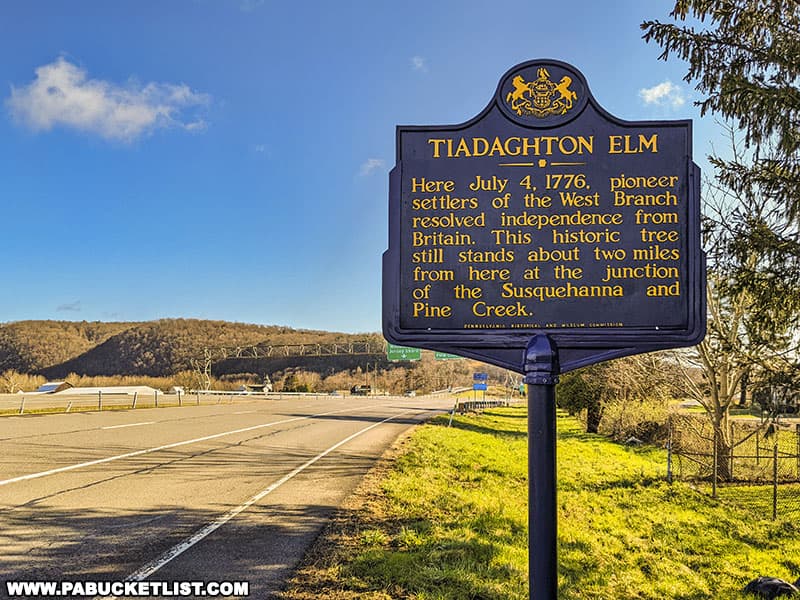
The signers were a group of frontier settlers known as the Fair Play Men, and they signed their own declaration of independence from Great Britain at about the same time as the final draft of the Declaration of Independence was being approved by the Continental Congress meeting in Philadelphia.
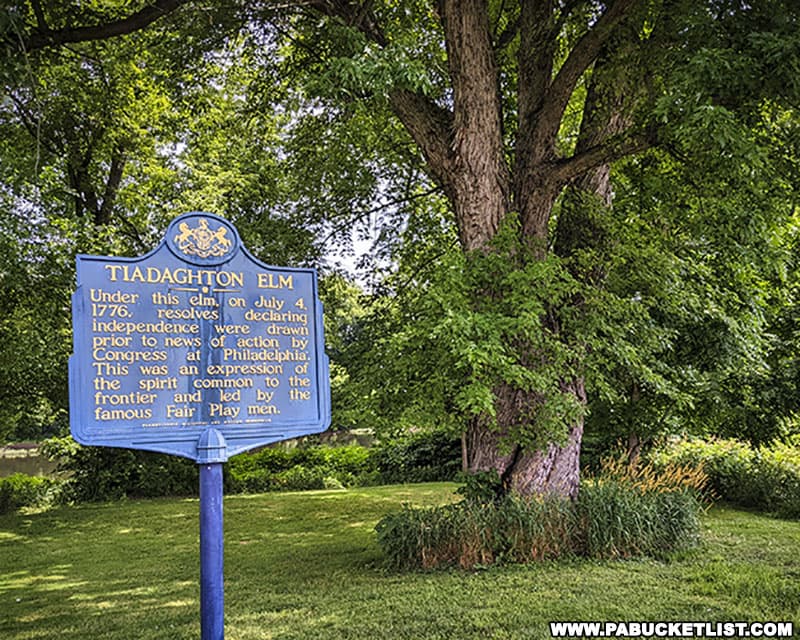
Considering that the Declaration of Independence drafted in Philadelphia wasn’t actually signed until August 2, 1776, it is possible that the Pine Creek Declaration of Independence was the first “signed” declaration of its kind!
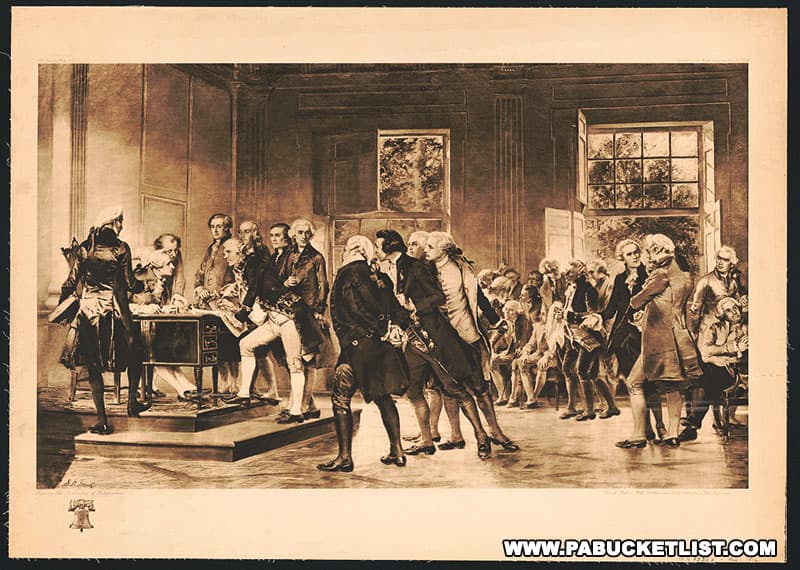
Related Attractions
The Museum of the American Revolution in Philadelphia uses historic artifacts, dioramas, short films, paintings, and other exhibits to tell the story of the Revolutionary War in America.
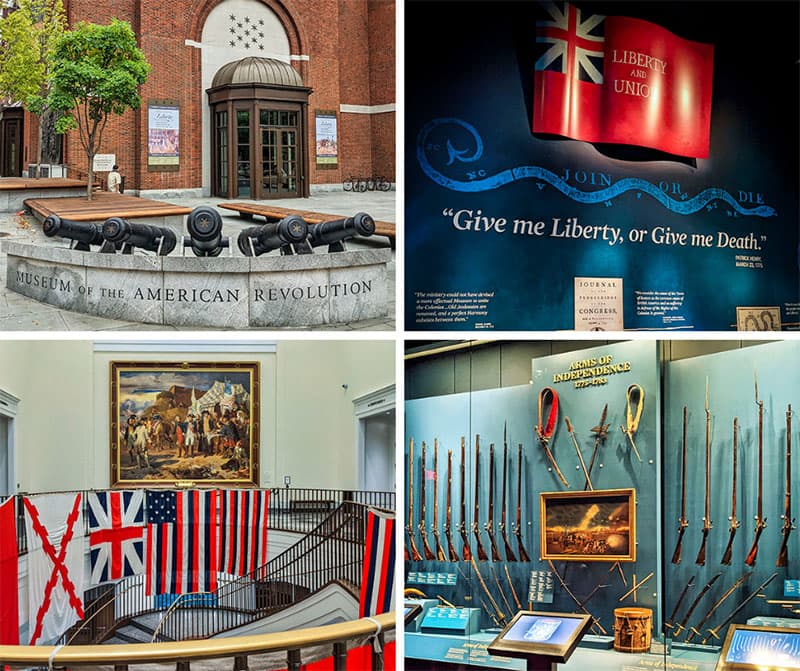
Christ Church in Philadelphia is famous for its ties to the American Revolution, with many of the Founding Fathers including George Washington, John Adams, and Benjamin Franklin attending services there.
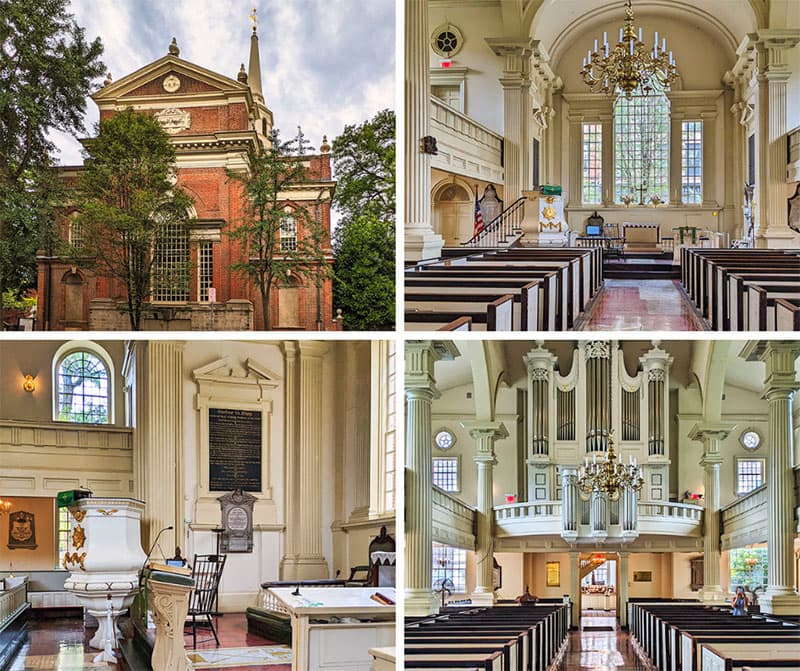
The Betsy Ross House is one of Philadelphia’s most popular tourist attractions, said to be the site where Betsy Ross sewed the first American flag in late May, 1776.
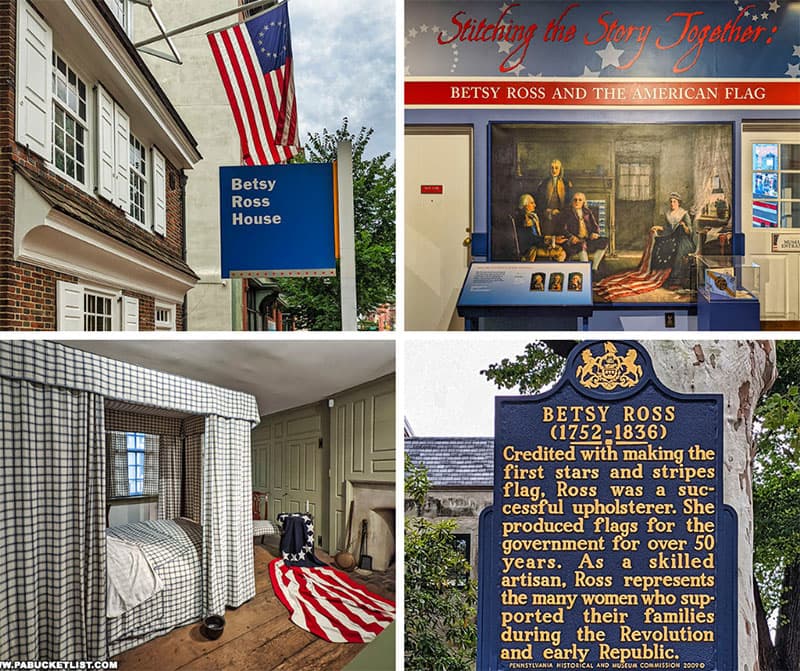
Valley Forge National Historical Park near Philadelphia is a tribute to General George Washington and the Continental Army, which spent the winter of 1777-78 here, overcoming adversity of many kinds and emerging as a stronger, more capable fighting force that ultimately defeated the British forces in the Revolutionary War.
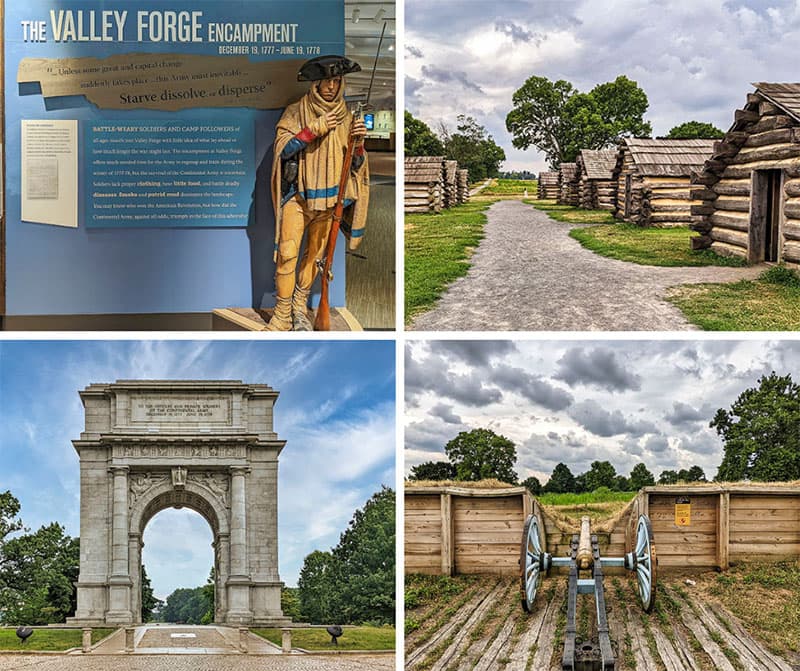
Brandywine Battlefield Park in Chester County preserves and interprets the story of the Battle of Brandywine, the largest and longest single day land battle of the American Revolution.
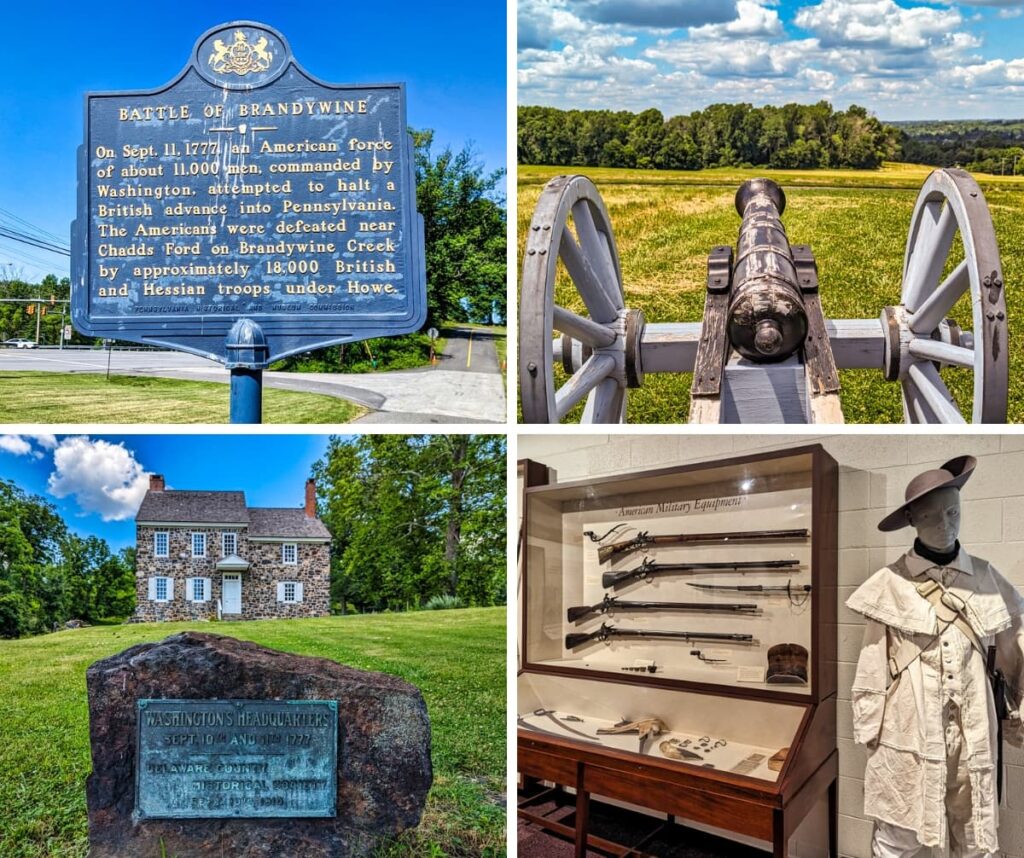
Elfreth’s Alley in Philadelphia is the oldest continually-inhabited residential street in the United States!
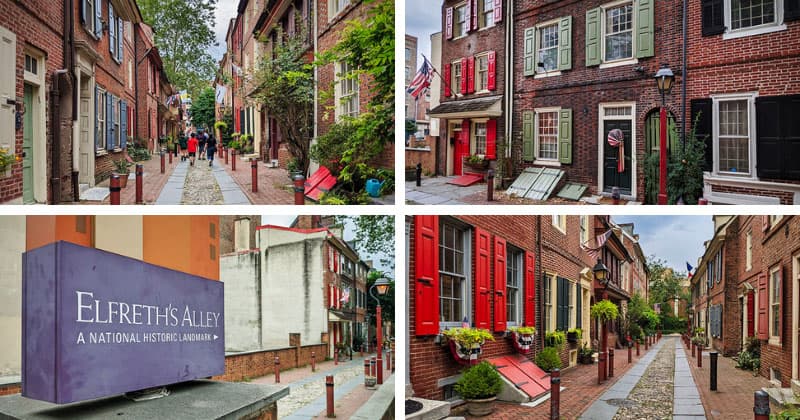
Nearby Attractions
Although he signed neither the Declaration of Independence nor the Constitution, Rocky Balboa certainly rivals the Founding Fathers for fame in Philadelphia!
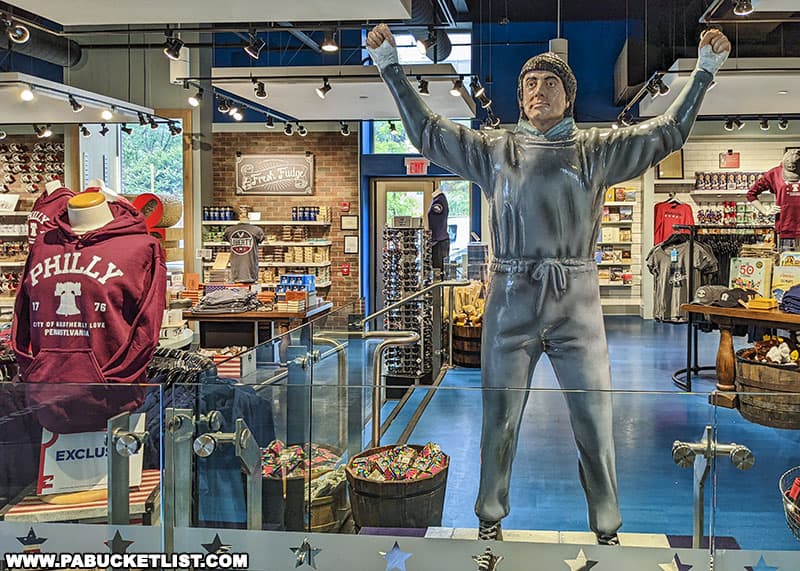
Visiting the Rocky Statue and Steps at the Philadelphia Art Museum is your guide to paying homage to Philly’s favorite fictional son.
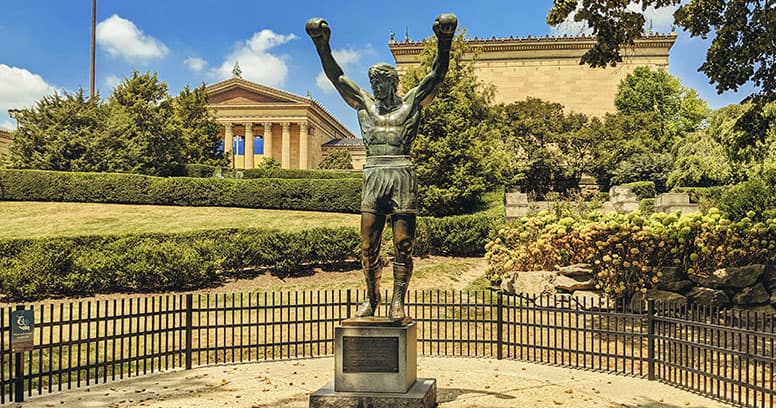
The Curtis Publishing Building was the home of The Saturday Evening Post and is where “The Dream Garden”, a massive Tiffany glass mosaic, is located.
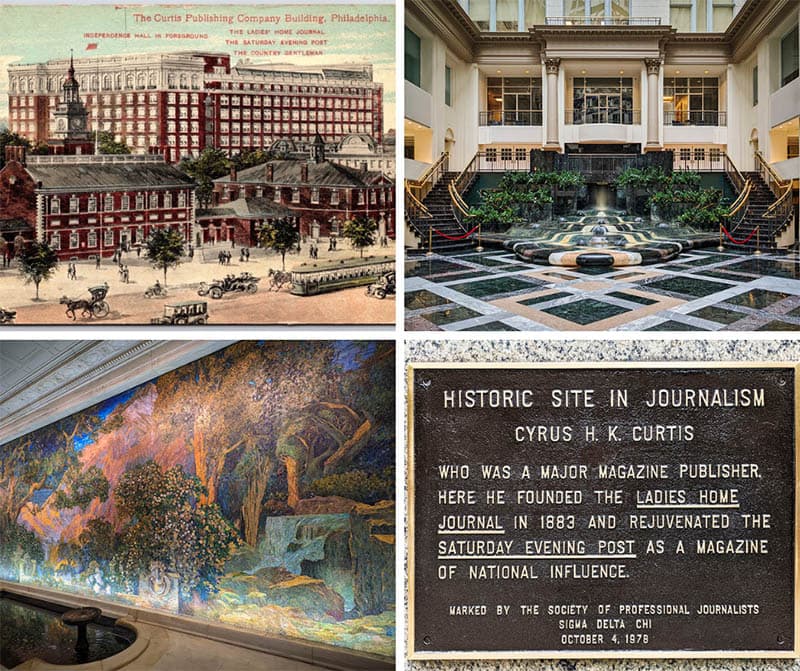
Eastern State Penitentiary in Philadelphia is America’s most-historic (and some say most-haunted) prison!
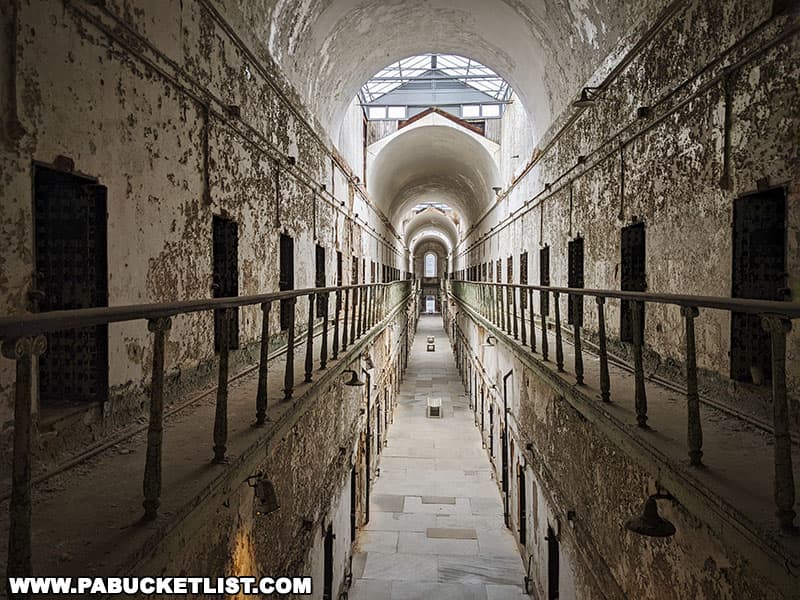
The Simeone Automotive Museum in Philadelphia is home to one of the world’s greatest collections of racing sports cars!

Exploring the Best National Park Sites in Pennsylvania is your guide to even more Keystone State attractions managed by or affiliated with the National Park Service.
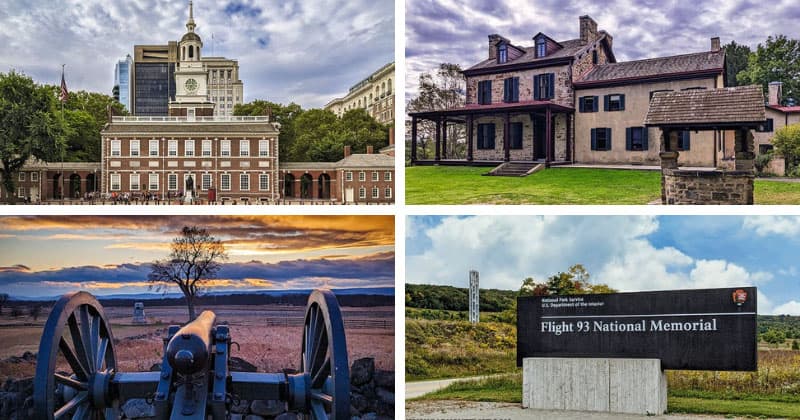
Did you enjoy this article?
If so, be sure to like and follow PA Bucket List on Facebook, Instagram, and/or Pinterest to learn more about the best things to see and do in Pennsylvania!
Click on any of the icons below to get connected to PA Bucket List on social media.


